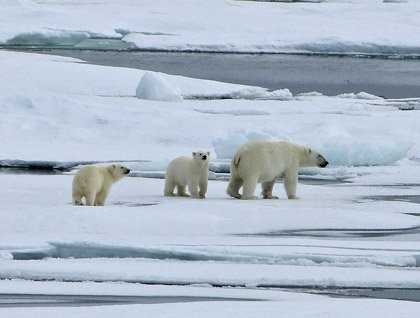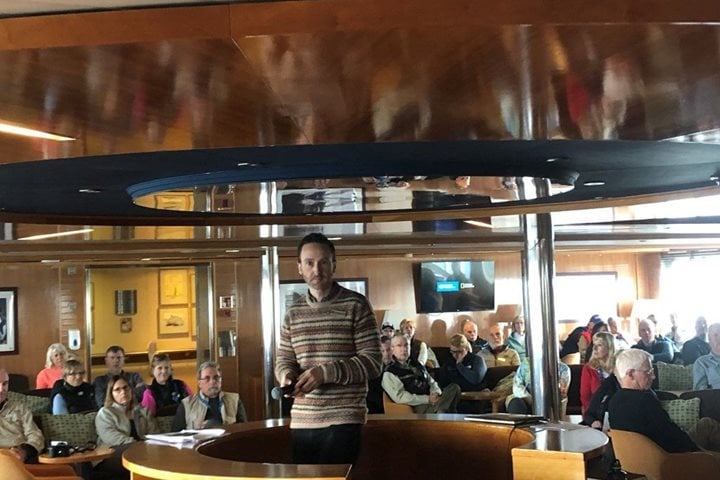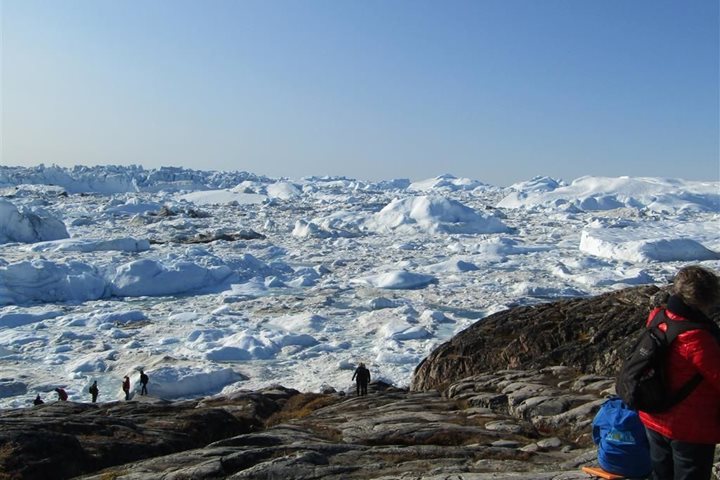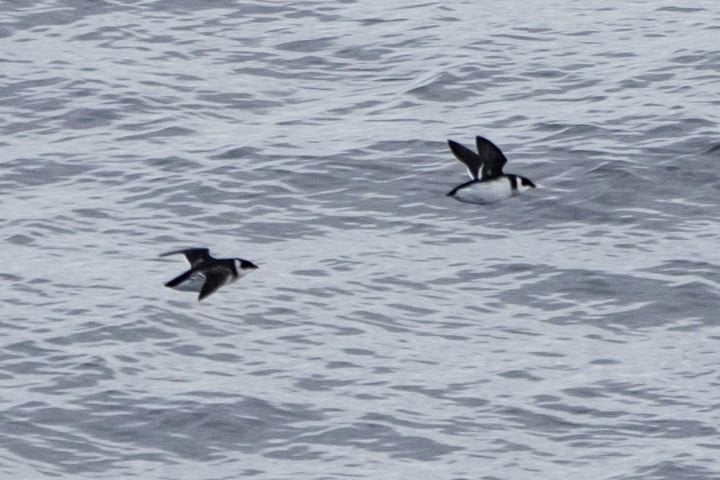During the winter most of the Arctic Basin is covered by ice. It is a frozen ocean, except for the areas that we call polynyas, where winds and currents prevent the development of ice. Polar bears roam over the Arctic ice, seeking seals. Winter and, especially, spring when the seal pups are born, is the time of plenty for polar bears. During the Arctic summer, the sea ice breaks up and moves with the winds and currents. Its extent diminishes as the ice melts. Polar bears are concentrated onto ever-smaller areas of ice to search for their meals. To find the bears, you must find the ice. Today we found the ice in Lancaster Sound, and we found the bears. Our ship entered into the ice, slicing through the rotting remains of last winter's frozen sea. As we turned over pieces of ice, kittiwakes and glaucous gulls followed closely, snatching the polar cod that were revealed as we broke the ice. The occasional ivory gull flew over, uttering its distinctive call. That is always a good sign, because ivory gulls feed on the remains of seals killed by bears. We found a bear with the carcass of his kill. He seemed annoyed by the many birds that gathered around him, making bluff charges to keep them at a distance. It didn't really work.
It was a day spent on deck, at our favorite perches, with occasional forays into the Chart Room for a warm-up of hot coffee or cocoa and a respite from the brisk Arctic wind. What set this day aside from our previous experience in the ice was the number of female bears seen with their young. Female polar bears have a problem. They must find the food needed to nourish their offspring, through their milk for young (first year) cubs or through shared prey for older cubs (yearlings). But hunting on the ice brings them into contact with male bears that pose a risk to the young. The smaller the areas of residual ice, the greater the concentration of male bears and the greater the risk to the young. The females appeared more wary than the males. We watched a female rapidly lead her yearling cubs away as a male bear approached. He followed, until he was distracted by a fourth bear. We will never know the outcome. Was he waiting for her to capture a seal that he would then take over, profiting from her hunting skill but sending her and her cubs away hungry? Did he lose interest and move on? Did she capture a seal, and will her cubs survive to independence?
What kind of a Polar Sea will her cubs inherit? The diminishment of Arctic ice during recent summers is well documented and undeniable. Increased interactions between bears on the shrinking ice seem inevitable.







